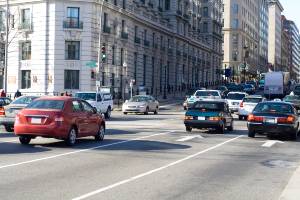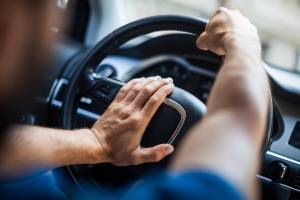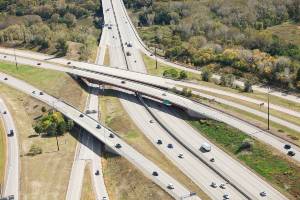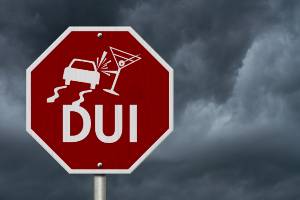Do Insurance Companies Undervalue Car Crash Claims?
 There is no question insurance companies regularly undervalue car crash claims. It is often shocking to see the gap between the insurance company’s initial offer and the final amount an attorney recovered. Sometimes the victims in these cases are permanently injured, yet the insurance company’s offer barely begins to cover medical treatment.
There is no question insurance companies regularly undervalue car crash claims. It is often shocking to see the gap between the insurance company’s initial offer and the final amount an attorney recovered. Sometimes the victims in these cases are permanently injured, yet the insurance company’s offer barely begins to cover medical treatment.
The good news is attorneys are often able to negotiate with the insurance company to obtain significantly more than the insurance company initially offers. However, you need an experienced attorney with a history of results.
Call TSR Injury Law today to learn more about how our Bloomington-based car accident lawyers may be able to assist you. We have recovered millions on behalf of car crash victims. The initial consultation is free.
Below, learn more about why insurance companies undervalue claims and what your attorney can do about it.
Reasons Claims are Undervalued
Insurance companies are a business, and like any other business, they must make a profit to survive. In other words, they need to have more money coming in than going out. For an insurance company, that means taking in more money with customer’s premium payments than they pay out in compensation to injured people.
Insurance companies’ interests are at odds with the interests of their customers. It is in the best interests of the insurance company to look for some way to deny or lowball a claim.
When the insurance company cannot flat out deny a claim because there is enough proof of liability on their behalf, the second option for them is to at least devalue the claim. But the insurance company needs to give a reason for why a claim is not worth the amount you are asking for.
You Caused the Crash
Insurance companies often say this even when it seems blatantly obvious you are not at fault. In a case where the victim was hit by another car whose driver was excessively speeding or did not have the right of way, the insurance company may claim you made some minor mistake and that was the cause of the crash. They argue you are 10 percent at fault for being on the road. Every 10 percent reduction adds up to their profit margin.
You must be careful what you tell the insurance company because an innocent statement like “I was in a rush,” will be used against you.
The insurance company may cite your failure to wear a seat belt as a reason to deny your claim even though it has nothing to do with the actions of the other driver.
You are Partially at Fault
Even if you are partially at fault, you can still seek compensation for your damages. However, insurance companies like to pin significantly more fault on victims because if you are found to be more than 50 percent at fault, you cannot recover any compensation, no matter how hurt you are.
It is best not to take the insurance company at their word about your percentage of fault. You should discuss the issue with your lawyer, and above all do not admit fault to the insurance company.
Your Injuries are not That Serious
There is a myth that soft-tissue injuries are not as bad as broken bones. However, soft-tissue damage can cause lingering pain and other medical problems
The people who work at insurance companies are not doctors. Medical professionals are the ones who should judge the severity of your injuries. Often, the severity of an injury is not known right away. It takes weeks or months for doctors to see how a patient responds to treatment to determine the long-term impact of a car crash injury.
It is important to not give the insurance company something to use against you. That is why it is important to seek treatment right away and continue that treatment. That makes it harder for the insurance company to argue about how bad your injuries may be.
You did not Seek Treatment Quickly Enough
Insurance companies will look to see when you sought treatment after the crash. If there is a significant gap in time between the crash and the date you first sought treatment, they may use it against you. Minnesotans are often injured in crashes, but delay seeking medical care. They assume the “pain will go away”, or do not like visiting doctors or have a “high threshold for pain.” All of these are real reasons to delay seeking medical treatment, but they are also ammunition for the at fault insurance to claim you are not hurt. The insurance company will say you were injured because of something else besides the crash and you are just trying to get money.
You did not Continue Your Treatment
If you stop going to treatment, you risk having your injuries worsen. You also give the insurance company a reason to devalue your claim. If you stop treatment, they will argue you are fine and do not need compensation for future treatment. Stopping treatment allows the insurance company to call your credibility into question.
Need Help After a Car Crash? Call Today
Talking to a lawyer can be an important step after suffering an injury in a car crash. You cannot rely on the insurance company to take care of you.
Our experienced attorneys have seen how insurance companies deny and devalue legitimate claims. We have also challenged them and secured compensation for many victims.
Our attorneys work on contingency, which means there are no upfront fees and no fees while we work on your case. There is no risk in contacting us.
Millions Recovered. No Upfront Fees. Call (612) TSR-TIME.


 Many car crashes are the result of another driver’s actions. For example, many drivers simply do not pay enough attention to those around them or exercise caution when changing lanes or making other driving maneuvers.
Many car crashes are the result of another driver’s actions. For example, many drivers simply do not pay enough attention to those around them or exercise caution when changing lanes or making other driving maneuvers. One of the last things you want to have to deal with after a crash is the other driver approaching your vehicle yelling or screaming at you or making threats. Unfortunately, this happens, even though the other driver may be to blame for the crash.
One of the last things you want to have to deal with after a crash is the other driver approaching your vehicle yelling or screaming at you or making threats. Unfortunately, this happens, even though the other driver may be to blame for the crash. Car crashes can happen anywhere at any time because you never know when you may cross paths with a negligent driver. It could even happen while you are on vacation or driving out of state for some other reason, such as a business trip.
Car crashes can happen anywhere at any time because you never know when you may cross paths with a negligent driver. It could even happen while you are on vacation or driving out of state for some other reason, such as a business trip. Despite the fact it is illegal, and people are aware of the risks, people continue to drive drunk, resulting in dangerous accidents that cause severe injury and death.
Despite the fact it is illegal, and people are aware of the risks, people continue to drive drunk, resulting in dangerous accidents that cause severe injury and death.